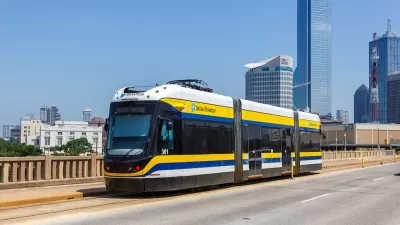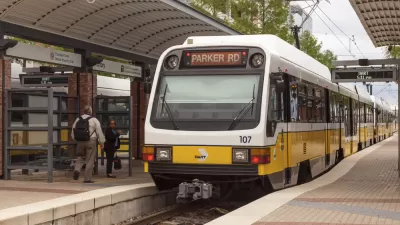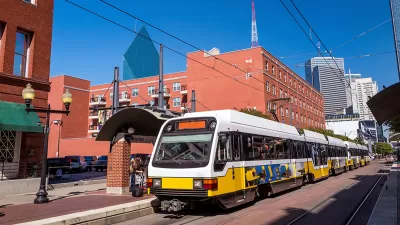The agency’s director wants to change the city’s transportation priorities and provide more mobility options to residents.

Dallas established a Department of Transportation just last year, and Michael Rogers, the city’s new transportation director, envisions a more connected city less focused on cars. Rogers is taking steps to bring comprehensive transportation planning and multimodal networks to Dallas. In addition, he is behind the use of data analytics that brought electric scooters to the city and have helped guide pedestrian safety projects.
Emily Nonko reports that Rogers has also taken on the Texas Department of Transportation by challenging plans to widen Interstate 30 East, a move that city leaders described as "radical":
He pushed back, offering his own "guiding principles" for the redesign. They included better connections for cyclists and pedestrians, no highway expansion in height or width, and bringing the elevated portion of the road below grade to reconnect neighborhoods that have been torn apart by infrastructure development.
Rogers has plans to continue a shift away from a singular focus on road projects, develop a strategic mobility plan, and make public input an integral part of the planning process.
Still, Nonko points out that Dallas faces a long road and many hurdles in improving the region’s transportation system, particularly around transit. "A big criticism of Dallas Area Rapid Transit’s sprawling rail system: While the largest in the country, it’s inefficient and doesn’t effectively serve many dense neighborhoods."
FULL STORY: Dallas DOT Is Making Plans for a Better-Connected City

Study: Maui’s Plan to Convert Vacation Rentals to Long-Term Housing Could Cause Nearly $1 Billion Economic Loss
The plan would reduce visitor accommodation by 25,% resulting in 1,900 jobs lost.

North Texas Transit Leaders Tout Benefits of TOD for Growing Region
At a summit focused on transit-oriented development, policymakers discussed how North Texas’ expanded light rail system can serve as a tool for economic growth.

Why Should We Subsidize Public Transportation?
Many public transit agencies face financial stress due to rising costs, declining fare revenue, and declining subsidies. Transit advocates must provide a strong business case for increasing public transit funding.

How to Make US Trains Faster
Changes to boarding platforms and a switch to electric trains could improve U.S. passenger rail service without the added cost of high-speed rail.

Columbia’s Revitalized ‘Loop’ Is a Hub for Local Entrepreneurs
A focus on small businesses is helping a commercial corridor in Columbia, Missouri thrive.

Invasive Insect Threatens Minnesota’s Ash Forests
The Emerald Ash Borer is a rapidly spreading invasive pest threatening Minnesota’s ash trees, and homeowners are encouraged to plant diverse replacement species, avoid moving ash firewood, and monitor for signs of infestation.
Urban Design for Planners 1: Software Tools
This six-course series explores essential urban design concepts using open source software and equips planners with the tools they need to participate fully in the urban design process.
Planning for Universal Design
Learn the tools for implementing Universal Design in planning regulations.
City of Santa Clarita
Ascent Environmental
Institute for Housing and Urban Development Studies (IHS)
City of Grandview
Harvard GSD Executive Education
Toledo-Lucas County Plan Commissions
Salt Lake City
NYU Wagner Graduate School of Public Service





























